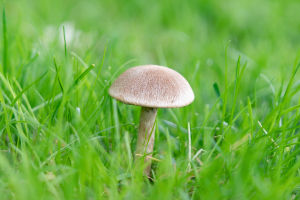The kapok tree is a tall tropical species that primarily grows in the rainforests of the Americas, Africa, and Southeast Asia.
As one of the key symbols of tropical regions, the kapok tree not only has a distinctive appearance but also profoundly impacts local societies at ecological, economic, and cultural levels.
Reaching heights of up to 70 meters, the kapok tree's thick trunk makes it stand out in dense rainforests. Its broad canopy forms a vast, umbrella-like crown that casts a large shadow, providing shelter for plants and animals beneath.
The bark of the kapok tree is generally smooth and gray, though older trees may exhibit cracks or a scaly structure. One of its most distinguishing features is the dense, thick thorns covering its trunk, especially during its younger stages. These thorns serve as a defense mechanism against herbivores, protecting the tree from being eaten.
Each year, during the dry season, the kapok tree sheds its leaves and soon after blooms with beautiful white or pink flowers. These flowers are rich in nectar, attracting a wide range of pollinators, including bees, bats, and birds, which rely on the nectar as a vital food source.
Once pollinated, the flowers give way to green pods that contain cotton-like fibers around the seeds. As the pods mature and split open, the cottony fibers, light and fluffy, are carried by the wind, dispersing the seeds to new locations, and facilitating the tree's reproduction.
These soft fibers, known as kapok, are highly valued and used for centuries as stuffing material in pillows, mattresses, life jackets, and other products due to their buoyant and waterproof qualities.
Economically, the kapok tree is significant. Its fibers are in demand for being light, soft, and water-resistant. Traditionally, kapok fiber was the preferred choice for stuffing pillows, mattresses, and sofas.
Its water-repellent nature also made it essential for producing life-saving equipment such as life jackets, as the fibers help maintain buoyancy and offer good thermal insulation.
Furthermore, kapok fiber is a natural, eco-friendly insulating material used in the construction industry. Although synthetic fibers have largely replaced kapok in many markets, it remains a favored choice among those seeking environmentally friendly materials.
Beyond the fiber, other parts of the kapok tree, such as its trunk, fruit, and bark, hold valuable economic significance. The wood of the tree is lightweight and soft, making it easy to work with for crafting boats, furniture, building materials, and paper pulp.
The seeds, rich in oil, can be used to produce kapok oil, which is used in producing soap, lubricants, and some medicinal products. In addition, the bark of the kapok tree has traditional medicinal uses. It is believed to have healing properties and is often used to treat ailments like fever and inflammation in traditional medicine.
Ecologically, the kapok tree plays a crucial role in maintaining the balance of rainforest ecosystems. As a giant plant, it provides shelter and sustenance to various plants and animals in the rainforest.
The large canopy helps regulate the temperature and create a cooler environment for smaller plants to thrive beneath it. The kapok tree also offers a habitat for numerous animals.
Its flowers serve as an essential food source for bats, birds, and insects, while its branches and hollow spaces provide nesting spots for small mammals and birds. Additionally, the deep roots of the kapok tree help stabilize soil, particularly during the dry season, preventing erosion and maintaining soil integrity.
As a significant component of the rainforest's carbon sink, the kapok tree absorbs carbon dioxide through photosynthesis, reducing greenhouse gas emissions and playing a part in mitigating climate change.
Culturally, the kapok tree is imbued with deep symbolic meanings. In many indigenous cultures across Africa and the Americas, the kapok tree is considered sacred, representing life and the forces of nature.
In parts of West Africa, for example, the tree is seen as a gateway to the ancestral world. Villagers often gather beneath the tree to perform rituals, offering prayers for a bountiful harvest and peace.
Similarly, in Mayan civilization, the kapok tree is regarded as a "world tree" that connects the heavens and the earth. Its vast crown symbolizes the celestial realm, while its deep roots are believed to connect to the underworld. Thus, the kapok tree is not only a natural resource but also holds profound spiritual and cultural significance for many communities.
The kapok tree carries immense ecological, economic, and cultural importance. It is an essential part of the rainforest and plays a key role in human history and culture. However, in light of growing environmental threats, efforts to protect the kapok tree and its habitat have become increasingly urgent.
By promoting ecological conservation and sustainable use, humans can ensure that the kapok tree continues to provide benefits for future generations, preserving the legacy of this ancient species for years to come.


